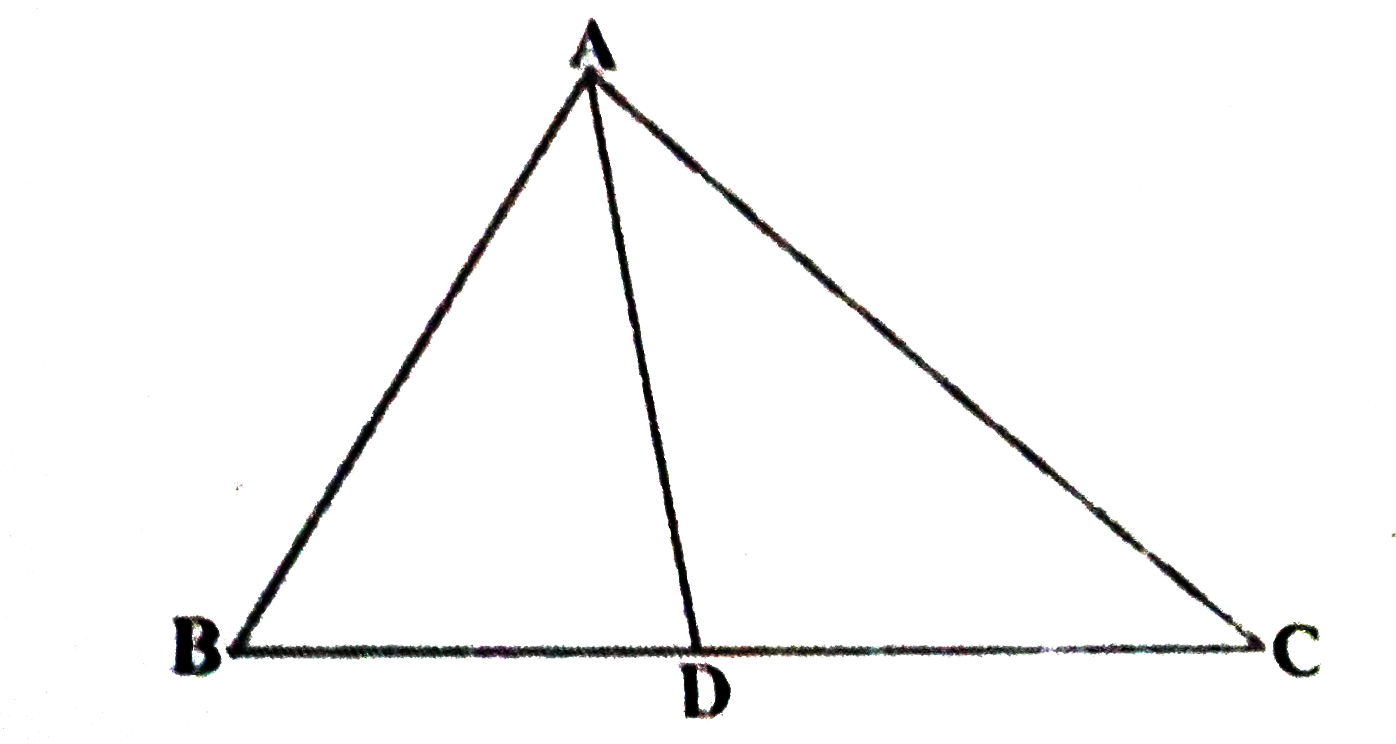In fig.9, D is a point on side BC of a ABC. AD is joined. Name all the triangle that you can observe in the figure. How many are they?
To solve the problem, we will identify and name all the triangles present in the given figure where point D is located on side BC of triangle ABC, and line AD is drawn.
1. Identify the Largest Triangle:
The largest triangle in the figure is triangle ABC.
- Triangle ABC: This triangle includes vertices A, B, and C.
2. Identify Smaller Triangles:
Since point D is on side BC, we can form two smaller triangles by connecting point D to the vertices A, B, and C.
- Triangle ABD: This triangle is formed by vertices A, B, and D.
- Triangle ACD: This triangle is formed by vertices A, C, and D.
3. List All Triangles:
Now, we can list all the triangles we have identified:
- Triangle ABC
- Triangle ABD
- Triangle ACD
4. Count the Triangles:
In total, we have identified three triangles in the figure.
Final Answer:
The triangles observed in the figure are:
1. Triangle ABC
2. Triangle ABD
3. Triangle ACD
Total number of triangles = 3
The largest triangle in the figure is triangle ABC.
- Triangle ABC: This triangle includes vertices A, B, and C.
Since point D is on side BC, we can form two smaller triangles by connecting point D to the vertices A, B, and C.
- Triangle ABD: This triangle is formed by vertices A, B, and D.
- Triangle ACD: This triangle is formed by vertices A, C, and D.
Now, we can list all the triangles we have identified:
- Triangle ABC
- Triangle ABD
- Triangle ACD
In total, we have identified three triangles in the figure.
The triangles observed in the figure are:
1. Triangle ABC
2. Triangle ABD
3. Triangle ACD
Topper's Solved these Questions
Similar Questions
In fig. 10, A,B,C and D are four points, and no three points are collinear. AC and BD intersect at O. there are eight triangle that you can observe. Name all the triangles.
View SolutionIn fig. 10, A,B,C and D are four points, and no three points are collinear. AC and BD intersect at O. there are eight triangle that you can observe. Name all the triangles.
View SolutionD is a point on side BC of ΔABCsuch that AD = AC(see Fig. 7.47).Show that AB > AD.
View SolutionIn figure D is a point on side BC of a ΔABCsuch that BDCD=ABAC. Prove that AD is the bisector of ∠BAC.

View SolutionIn Fig.11, it is given that AB=CD and AD=BC. Prove that ADC≅CBA.
View SolutionD and E are points on equal sides AB and AC of an isosceles triangle ABC such that AD=AE . Prove that B,C,D,E are concylic.
View SolutionD is a point on the side BC of a triangle ABC such that ∠ADC=∠BAC. Show that CA2=CB.CD.
View SolutionIn a scalene triangle ABC,D is a point on the side AB such that CD2=ADDB, sin s∈AS∈B=sin2C2 then prove that CD is internal bisector of ∠C.
View SolutionTwo circles are drawn with sides AB,AC of a triangle ABC as diameters. The circles intersect at a point D. Prove that D lies on BC.
View SolutionIn Figure, it is given that AB=CD and AD=BC. Prove that ADC≅CBA
View Solution
